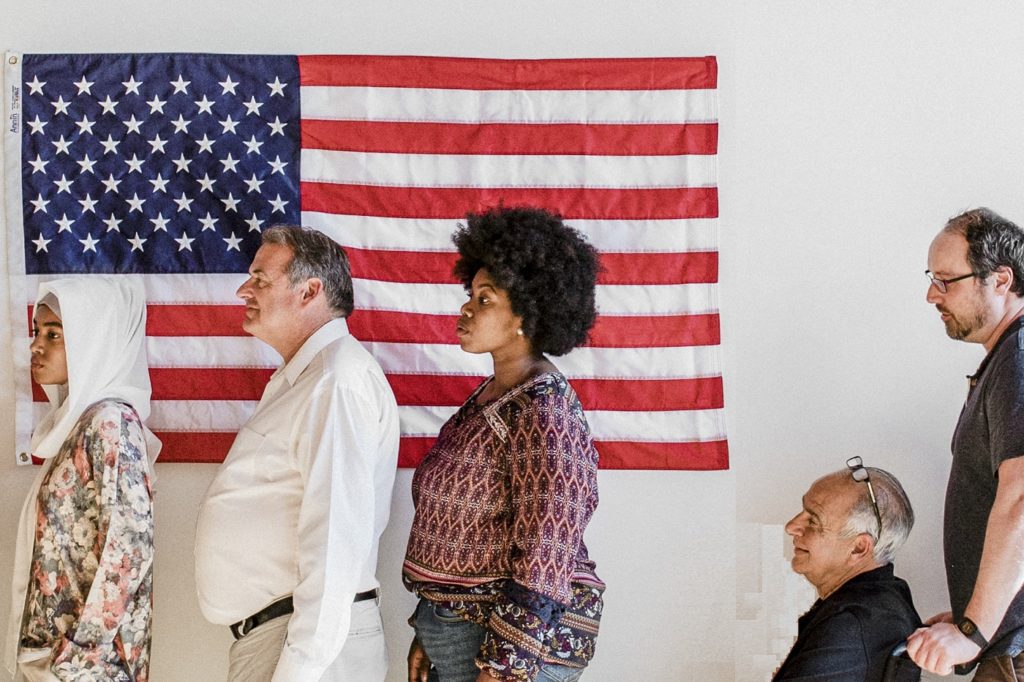One should pay close attention to Marco Rubio and Josh Hawley when they suggest—as they did almost gleefully the day after the 2020 election—that Republicans could become a multi-ethnic, working-class party. One could dismiss it as political posturing and messaging, but in light of the current realignment, and especially in light of what updated exit polling apparently shows about the electorate, I want to argue that there are good reasons to be hopeful.
Washington Post columnist Eugene Robinson identified the major political shift more than three years ago:
My view is that the traditional left-to-right, progressive-to-conservative, Democratic-to-Republican political axis that we’re all so familiar with is no longer a valid schematic of American political opinion. And I believe neither party has the foggiest idea what the new diagram looks like.
That was true then, but we now have much more detail with which to work in trying to anticipate where things might settle. In short, the missteps of white progressives with regard to race and religion have given Republicans a golden opportunity to build a culturally dominant, multi-ethnic, working-class party.
Start your day with Public Discourse
Sign up and get our daily essays sent straight to your inbox.Republicans and Race
Though there are multiple, interlocking factors that will account for levels of detail in the political diagram, ethnicity and race are particularly significant.
Even before the election, Columbia sociologist Musa al-Gharbi was trying to tell us that many of our expectations along these lines were mistaken. He noted that whites were shifting toward Biden and that minorities were headed toward Trump, compared with what happened in 2016.
Al-Gharbi’s predictions proved correct. The numbers of affluent and educated whites going for Biden—particularly in the suburbs around major cities—ended up being enough to offset blacks, Latinos, and Asians shifting toward Trump. Remarkably, our soon to be ex-president actually gained votes in cities like Philadelphia, Detroit, and Milwaukee.
We can even see the phenomenon within major cities themselves. As David Leonhardt lamented in the New York Times recently, when compared with his performance in 2016, Trump did significantly better in 2020 in the Bronx (which is 9 percent non-Hispanic white) and significantly worse in Manhattan (which is 47 percent white).
Shor points out that working-class whites 'have more culturally in common' with working-class Blacks and Hispanics than that they do with white progressives.
Despite an absolute onslaught of coverage and opinions from our elite institutions over four years driving home the point that Trump is a racist (and that he had a particular problem when it came to Hispanics) the president, remarkably, was able to keep the race close by winning over people of color. Indeed, he did particularly well in majority Hispanic counties, beating Biden there by 18 points.
Hispanics also abandoned Democrats down-ballot, as Democratic pollster David Shor pointed out. This contributed to surprising GOP strength in congressional and state races. One explanation for this, he suggests, is that the Democratic Party has been pulled left by “college-educated white people,” which has caused non-white voters to “move against us.”
By way of explanation, Shor points out that working-class whites “have more culturally in common” with working-class blacks and Hispanics than they do with white progressives.
Discussing socialism in a positive light, serious talk about defunding the police, and going all-in on abortion rights may have alienated many working-class people of color. Contemporary conversations on the left around sex and gender also generally do not resonate with many of these populations. Hispanics in California even rejected affirmative action, despite many community leaders publicly supporting it.
The Future of Faith
Another significant, interlocking cultural divide relates to religion. It is no secret that the left has been trending irreligious for several years—with “nones,” according to Gallup, forming “one of the largest religious identity groups among Democrats.” This trend also sets the party against Hispanics, blacks, and the working classes, all of whom identify as significantly more religious than college-educated whites.
For instance, Pew finds that while only 49 percent of whites say religion is “very important” to them, that number is 59 percent for Latinos and a whopping 75 percent for blacks. Pew also finds a significant disparity based on education: those with an education of “high school or less” say that religion is very important to them at rates 12 percentage points higher than do college graduates.
This has led to electoral outcomes one might expect. Al-Gharbi has shown that Democrats “have been consistently losing ground with both people of color and people of faith in virtually every midterm and general election cycle after 2008.” In 2020, the only two faith groups in which Democrats did not lose ground were Catholics and those who do not identify as religious. Remarkably, the most dramatic losses the party suffered came from Muslims.
The facts about the future of faith in the US (and around the world) are more complex than the secularizing narratives college-educated folks tend to offer. Indeed, a major reason for the current partisan divide is that the electorate is becoming both more secular and more religious at the same time.
Can the GOP Pull This Off?
The opportunity for the GOP to build on these shifting trends and end up with a multi-ethnic, working-class party at the end of this realignment is real. Can they pull it off? One might be tempted to say no—in part because of inherently racist rhetoric and policies. But if this view is correct, it needs to account for the fact that a party with these problems just did the best it has done with ethnic and racial minorities in sixty years.
The biggest short-term drag on the GOP’s movement may be leaders and donors left over from days of small-government fundamentalism and corporate fan-service, but it isn’t clear how long the old guard can hold on.
The biggest short-term drag on the GOP’s movement may be leaders and donors left over from days of small-government fundamentalism and corporate fan-service. But in an era that has seen the rise of woke capitalism and a Republican president arguing for a larger stimulus package than the one favored by Nancy Pelosi, it isn’t clear how long the old guard can hold on.
None of this can be better illustrated than through the working-class embrace of Tucker Carlson’s unrelenting populism—and the rejection of that populism by conservative activists like Ben Shapiro who argue (rightly) that it sounds just like the rhetoric of Bernie Sanders or Elizabeth Warren. We are seeing cracks begin to form even in the old conservative battlements, however, with folks like National Review’s Jim Geraghty going on Jonah Goldberg’s podcast to say he could support substantial increases to the minimum wage.
One stubborn hurdle to going all-in with a new working-class populism may be the GOP’s historical resistance to labor unions. But in recent years they have focused less on unions overall and more on the specific fiscal problems posed by unions in the public sector, so even this substantial problem could be overcome.
The day after the 2016 election, I published an op-ed in the Washington Post arguing that the mistaken assumptions and cultural bubbles that often come with a progressive, privileged education have blinded many in our political and media classes to the realities and possibilities just described. This education gap appears to have widened over the past four years, further disconnecting many influential people from these realities and possibilities.
The dominant discourse on the left around race, around faith, and around what the working classes believe and want is fundamentally flawed. If it stays in its current bubble, if those who lead this discourse refuse to challenge their working assumptions, there will be little standing between Republicans and the formation of a new and culturally dominant party.
In order to reach this goal, the GOP should a become a party that has the following:
- Support for unions, a living wage, and a right to health care
- Skepticism of corporatism while favoring labor and (genuine) market exchanges
- Broad and firm opposition to abortion and euthanasia—while also insisting that vulnerable women, elderly, and sick have a much stronger level of support from families and from the broader community and culture
- Support of universally available religious education for the working classes through government vouchers
- A broader and more confident commitment to the religious and spiritual—to seeing the world as enchanted with the active grace of God
- Energetic support of the first and fundamental freedom to live out the religious and spiritual commitments in their lives, communities, and institutions—including protecting the consciences of health care providers, churches that protect immigrants, and the rights of parents to seek proper therapies for their gender-nonconforming children
Beyond that, I strongly second the suggestions recently offered by Professor Ashleen Menchaca-Bagnulo here at Public Discourse:
- Honesty about race and ethnicity in our country’s history—without throwing the baby out with the 1619 Project bathwater
- Mobilization of a multi-ethnic working class
- Thinking about the structural forces producing radical, obscene economic inequality
- Extension of the concern for structures that affect the white working class to how structures affect the broader working classes
I’ve argued fairly recently (here at Public Discourse) that faithful Christians should support the American Solidarity Party. I have not changed my mind. Especially as a moral theologian, I think it is (for now) the only party willing to wrestle with something close to the fullness of the Gospel in our current political and cultural moment. It is a young, growing, and (frankly) exciting party—one I’m very happy to support.
If, however, the GOP moves in the directions Professor Menchaca-Bagnulo and I suggest above, then people like me would have to strongly consider becoming members of a new and culturally dominant Republican Party.














